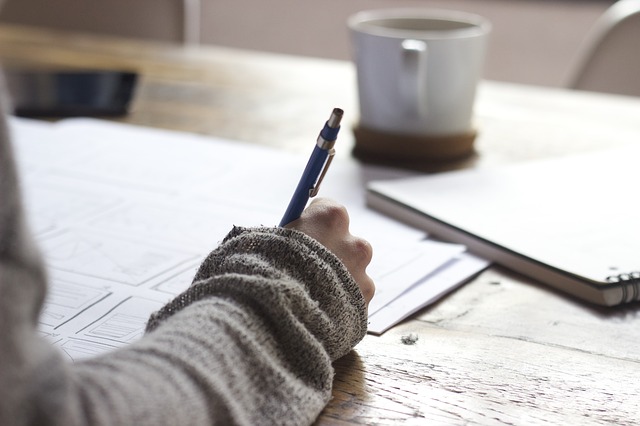Research methodology is about the data collection and analysis methods employed in your research. Thus, this section addresses what you performed and how you did it, letting readers assess the reliability and validity of your study and is a critical part of your thesis or dissertation.

Research methodology is about the data collection and analysis methods employed in your research. Thus, the purpose of this section is to address what you performed and how you did it, letting readers assess the reliability and validity of your study and is a critical part of your thesis or dissertation.
Ideally, this section should cover:
Type of the study
Data collection and analysis
Materials used in the study
The reasons for selecting these methods.
Here are some quick tips:
Your methodology section should be in the past tense.
Your academic style guides may offer specified guidelines on determining what to cover for various studies.
They may also provide guidelines for your methodology section (for example, APA 7, MLA, Harvard, and so forth).
This section allows you to discuss how you performed your research and choose the methods utilized. You can also depict how much effort you put into your study and how your study can be repeated if needed. Thus, it is about the legitimacy of your research, disclosing where it stands, and providing the readers with the opportunity to find answers to questions or critiques. For an effective methods section, you should pursue the following steps.
It would be best to begin by presenting your overall research perspective with two available options.
What research problem or question did you explore?
Aim to define the traits of a specific subject.
Investigate not deeply studied issue?
Build a causal relationship?
More importantly, what are the data required to achieve this objective?
Do you have quantitative data, qualitative data, or their mixture?
Did you collect the primary data, or did somebody else collect secondary data?
Did you gather data by controlling and deploying variables or have descriptive data via observations?
Some disciplines may allow you to begin discussing your methodology's rationale and assumptions. Put differently, why did you select these methods for your research?
Why do you think it is one of the best ways to address your research question?
Do you feel it is a standard methodology in your area, or does it need verification?
Are any ethical considerations parts of your selections?
How can you validate your study results?
After introducing your reader to your methodological approach, sharing full details about your data collection methods is next.
You should specify quantitative research methods in enough detail so that another researcher can replicate your study. Only then can your results be generalized. You must explain how you put your concepts to function and metered your variables. On top of that, you must discuss how you accomplished your sampling and the procedures and materials you employed.
Qualitative methods differ from quantitative ones as they are usually more flexible and subjective. Therefore, explaining the methodology choices you made is critical.
Make sure you elaborate on the criteria you employed to select your data, the context of your conducted research, and your role in data collection, such as participant or observer.
You must describe the place, the time, and the way the interviews were conducted. It would be best if you addressed the following questions.
How did you determine and choose participants?
How many participants partook in the study?
What were the types of interviews (Were they structured, semi-structured, or unstructured)?
What were the durations of the interviews?
How did you record the interviews?
For participant observation, you must specify where, when, and how you conducted the observation or, in some cases, ethnography. The relevant questions pursue.
Describe what group or community did you follow?
What procedures did you pursue to access this group? What was your role in the community?
How long did the research last? Where was the study’s location?
What did you use to record data (audiovisual recordings or note-taking)?
When you combine quantitative and qualitative approaches, you have mixed methods. Should a quantitative or qualitative study alone is inadequate to address your research question, you need mixed methods.
Consider that mixed methods research is beyond gathering both types of data. Instead, it should involve careful consideration and integrating two kinds of data into robust and solid conclusions.
Mixed methods are not very common as they demand strenuous effort to succeed. In case you choose to follow mixed methods, make sure that you robustly justify them.
The next step involves disclosing how you processed and analyzed your data. Introducing or discussing any of your results at this step is inappropriate. Excessive detail may not be helpful: Be careful!
Your analysis for quantitative research will depend on numbers. It could consist of checking for missing data, dealing with outliers, and transforming variables if needed. Thus, you may include the following in your methods section:
What did you do to prepare the data before analyzing it?
Which statistical software do you use? They might include SAS, SPSS, Stata, Microsoft Excel, or R.
What were the statistical procedures you employed to analyze your data? They would cover a two-tailed t-test, simple linear regression, ANOVA, etc.
Language, images, and observations as part of textual analysis form qualitative methods.
Particular methods might involve content analysis, thematic analysis, and discourse analysis.
When we integrate qualitative and quantitative approaches into one coherent analytical process, we have mixed research methods, combining the above two research methods.
Your methodology section should explicitly depict why you selected the employed methods. It becomes increasingly relevant if you have not used standard approaches in your study. Should it be the case, discuss why other methods were inappropriate for your objectives and depict how this approach introduces novel knowledge or understanding.
Irrespective of the case, your reader should comprehend the way you established to be successful concerning your methodology’s design. Extremely relevant is how your methods should result in valid and reliable conclusions while simultaneously allocating the analysis of your results' meaning, significance, and relevance for the discussion.
Editing and proofreading your research methodology is beyond critical. A professional editing and proofreading service with highly trained and experienced experts with Ph.D. in their fields will edit or proofread your thesis or dissertation methodology with utmost care. Their suggestions will substantially improve your methodology section.
Your objective should always be beyond describing your methods. It should disclose how and why you applied them. Do not neglect that demonstrating how rigorously your research was conducted and replicated is exceedingly relevant.
You must explicitly explain why your methods fit your objectives and persuade the reader that your chosen approach was one of the best to address your problem statement and research questions.
You can reinforce your methodology by citing extant research in your field. It will help you depict that you pursued established practices, discuss how you decided on your approach, and offer a new methodological approach to fill a gap in the relevant literature.
Suppose you use standard methods in your discipline. You may not need to present much background or justification. You should decide on how much information you need to give, which should not be excessive.
Best Edit & Proof expert editors and proofreaders focus on offering papers with proper tone, content, and style of academic writing, and also provide an upscale editing and proofreading service for you. If you consider our pieces of advice, you will witness a notable increase in the chance for your research manuscript to be accepted by the publishers. We work together as an academic writing style guide by bestowing subject-area editing and proofreading around several categorized writing styles. With the group of our expert editors, you will always find us all set to help you identify the tone and style that your manuscript needs to get a nod from the publishers.

You can also avail of our assistance if you are looking for editors who can format your manuscript, or just check on the particular styles for the formatting task as per the guidelines provided to you, e.g., APA, MLA, or Chicago/Turabian styles. Best Edit & Proof editors and proofreaders provide all sorts of academic writing help, including editing and proofreading services, using our user-friendly website, and a streamlined ordering process.
Visit our order page if you want our subject-area editors or language experts to work on your manuscript to improve its tone and style and give it a perfect academic tone and style through proper editing and proofreading. The process of submitting a paper is very easy and quick. Click here to find out how it works.
Our pricing is based on the type of service you avail of here, be it editing or proofreading. We charge on the basis of the word count of your manuscript that you submit for editing and proofreading and the turnaround time it takes to get it done. If you want to get an instant price quote for your project, copy and paste your document or enter your word count into our pricing calculator.
Contact us to get support with academic editing and proofreading. We have a 24/7 active live chat mode to offer you direct support along with qualified editors to refine and furbish your manuscript.
Follow us on Twitter, LinkedIn, Facebook, Instagram, and Medium.
For more posts, click here.
This article explains how to write a research methodology for a dissertation and thesis. To give you an opportunity to practice proofreading, we have left a few spelling, punctuation, or grammatical errors in the text. See if you can spot them! If you spot the errors correctly, you will be entitled to a 10% discount.
How to Determine Variability in a Dataset
14.10.2023
How to Determine Central Tendency
19.02.2023
How to Specify Study Variables in Research Papers?
14.01.2023
Population vs Sample | Sampling Methods for a Dissertation
14.01.2023
7 Issues to Avoid That may Dent the Quality of Thesis Writing
18.12.2022
How to Ensure the Quality of Academic Writing in a Thesis and Dissertation?
04.12.2022
How to Define Population and Sample in a Dissertation?
03.12.2022

Blog writing is an effective way to share your knowledge and ideas with your target group. Here you can dive deep and talk about your favorite topics, showcase your expertise and attract an audience or readers interested in your work. However, creating a perfect blog post can sometimes get overwhelming – from choosing the right topics to selecting the proper format for your articles to picking images that generate interest and engagement, it's no less than a task.
Continue Reading
A thesis statement is the main academic argument of the thesis that distills the central idea of the study informing the readers about your stance on your thesis topic and is therefore an integral part of writing the thesis. When writing a thesis statement, there are several contentions regarding the right approach. And understandably so, for there are no definite writing rules. But there certainly are writing best practices. In this article, we will look at some of these best practices and how you can leverage them to write a formidable thesis statement. But prior to that, let’s understand what a thesis statement is.
Continue Reading
We may have qualitative, quantitative, and mixed methods in dissertations. This blog will elaborate on quantitative dissertations, qualitative dissertations, and mixed methods dissertations by addressing their similarities and differences.
Continue Reading